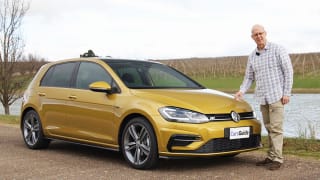
Volkswagen Golf 2017 review
The Golf 7.5, as the name implies, is a substantial mid-life upgrade of the current model. To raise the stakes, and sales (they hope), VW has injected new life into its marquee small-car player.
Browse over 9,000 car reviews

Renault's Megane is one of those cars we miss. Well I say 'we', I mean the Great Australian People. The automotive landscape is littered with undiscovered gems that fight for their patch but never seem to break through.
The hatch enjoyed a golden age over a decade ago with Patrick Le Quement's distinctively large-bottomed iteration, but its follow-up wasn't as brave, and settled back into relative obscurity (Renault Sport version excepted).
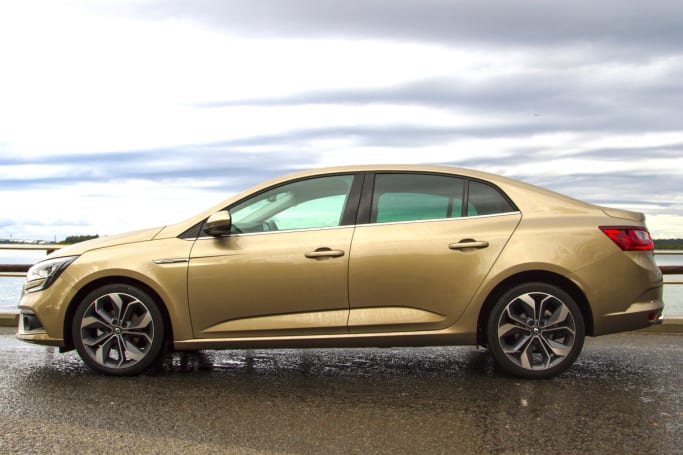
The new Megane sedan has arrived, and the mainstream range is almost complete. The Intens sedan is the top of the two model set and looks like it's going for substance instead of bargain-basement pricing. Which makes sense, because Australians basically ignore bottom-of-the-rangers these days, especially Euro cars.
| Renault Megane 2017: ZEN | |
|---|---|
| Safety rating | |
| Engine Type | 1.2L turbo |
| Fuel Type | Premium Unleaded Petrol |
| Fuel Efficiency | 6.1L/100km |
| Seating | 5 seats |
| Price from | $16,940 |
The Intens kicks off at $31,990 ($35,990 drive-away), a hefty premium over the mechanically identical $27,490 Zen. Standard are 18-inch alloys, eight-speaker stereo, dual-zone climate control, keyless entry and start, reversing camera, front, rear and side parking sensors, sat nav, auto LED headlights, auto wipers, part leather trim, auto parking, power windows, heated folding mirrors, sunroof, an impressive safety package and active cruise control.
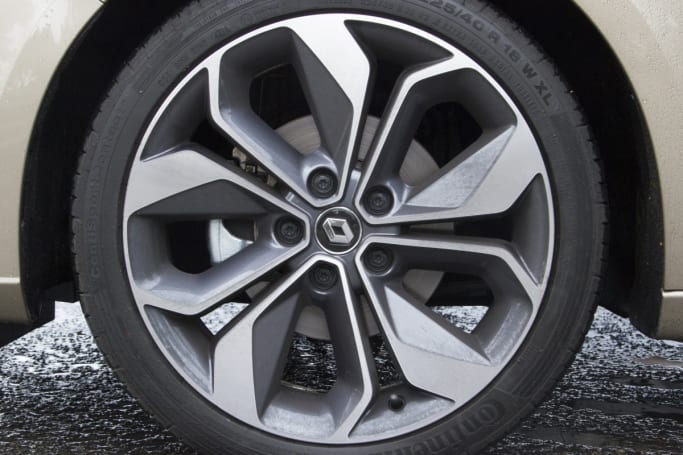
Renault's own 'R-Link' software runs the portrait-oriented 8.7-inch screen, with stereo controls hidden away behind the steering wheel on a little paddle. It's a good system (in the RS versions it will even record your telemetry) but is missing Apple CarPlay and Android Auto. In the Intens it's an up-spec colour version with vertically-stacked split screen so you can see your music and sat nav at the same time. Sadly, the reversing camera display is a bit grainy and small.
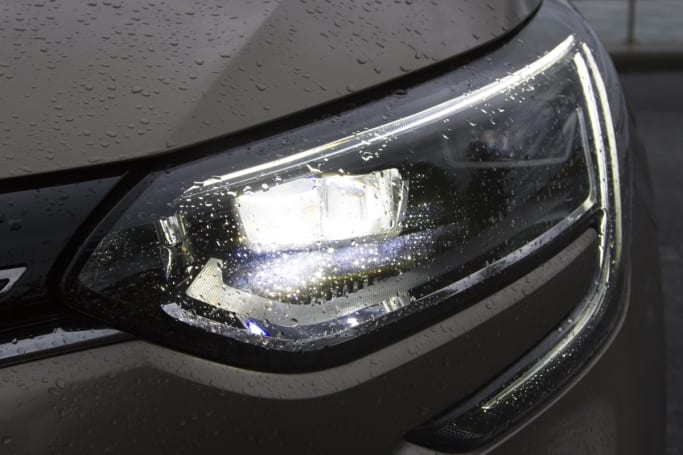
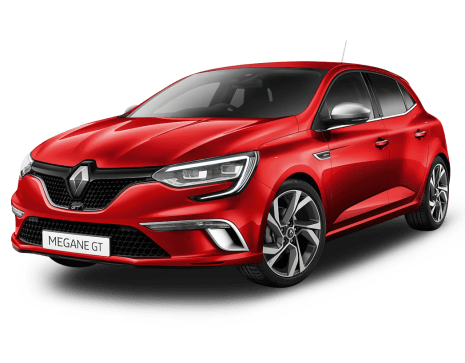
As boot-adding exercises go, the Megane's is hugely successful. The old car (known as Fluence) was a bit awkward, but then, the whole range was, save for the three-door RS. This Megane is a much bolder statement than before and it really looks the business in Intens trim.
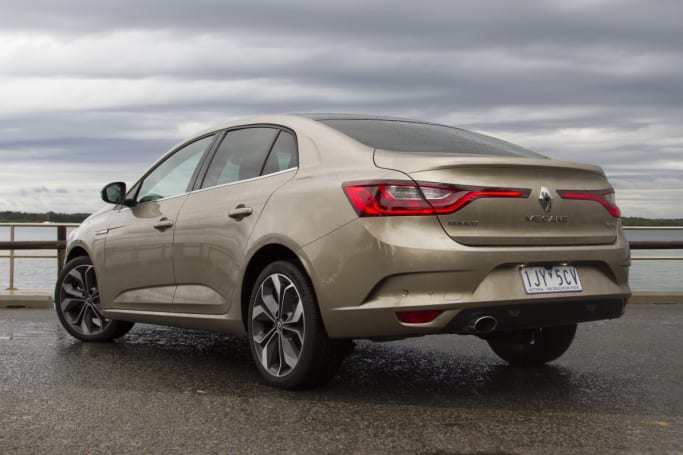
The big wheels suit the shape, making it look bigger, longer and lower all round. There are some lovely details, like the echo of the hatch at the trailing edge of the rear door, the terrific-looking, almost full-width tail-lights and the chunky headlights with signature daytime running lights.
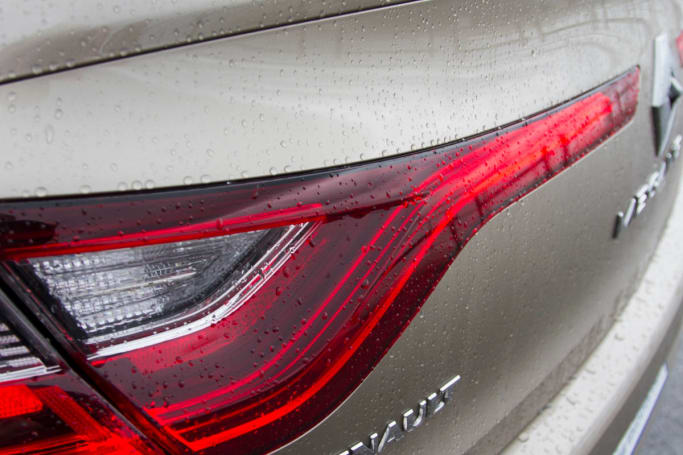
Inside, there's more restrained elegance. The dash panel looks well put together and the portrait-orientation of the screen (like a Tesla's) goes with the digital dash to imbue the cabin with a futuristic feeling. It looks good, even if the plastics aren't quite VW, but they're not far off.
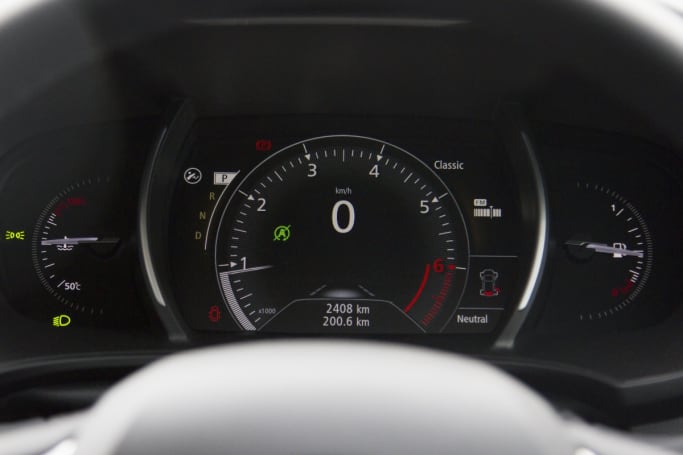
Tradition dictates the Megane hatch has marginal rear legroom, but with an extra 42mm in the wheelbase, there's another 37mm in legroom in the sedan, which makes a real difference. While it's not lounge around big, it's now in the ballpark for normal humans to remain in there without requiring corrective surgery.
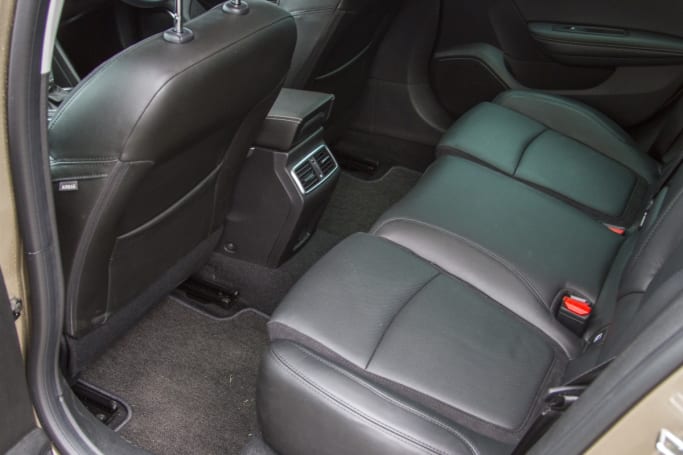
Front seat passengers are treated to a shallow central console bin, two tight cupholders and a tray under the air-con controls that cheerfully fit a larger-format iPhone. Rear passengers also have a pair of more commodious cupholders in the centre armrest and all four doors sport small bottle holders.
The boot starts at an already impressive 503 litres (69 up on the hatch) and when you drop the seats, you're up to 987 litres, which is quite a bit for a car this size. By comparison, the Mazda3 sedan's boot holds 408 litres. The Civic and Elantra beat the Megane by small margins.
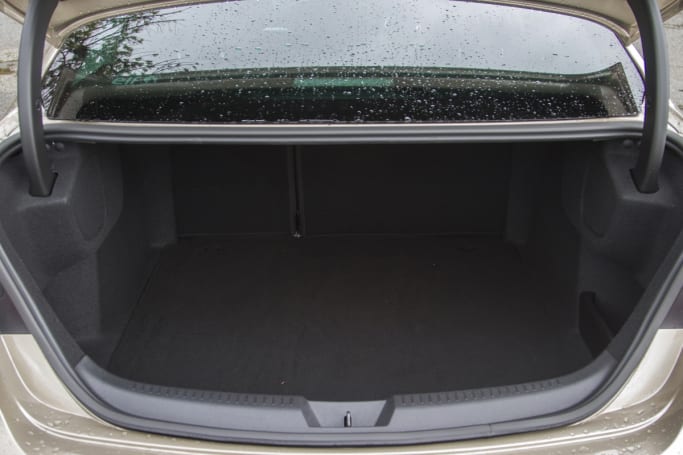
The Megane shares the Clio's 1.2-litre four-cylinder turbo, but producing 97kW (+9kW) and 205Nm (+15Nm). Power hits the road through the front wheels and Renault's seven-speed dual-clutch transmission, one more gear than the Clio.
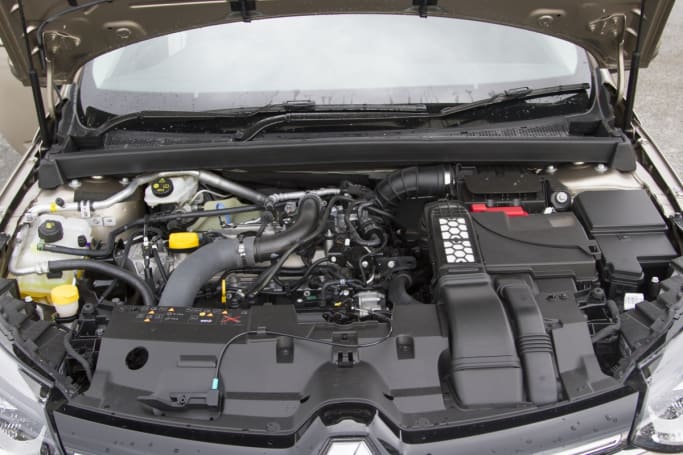
Renault quotes a leisurely 0-100km/h time of 10.9 seconds, which is terribly French and even slower than the 1.2-litre Clio - as you might expect with 1321kg, an extra 300kg, to drag.
Renault managed 6.1L/100km on the combined cycle for its official testing, and we found ourselves at 10.2L/100km, which is a solid miss. Most of our driving was suburban bashing with some peak hour/Sunday Sydney driving, both of which are awful stop-start disasters.
The Megane demands the good stuff, running minimum 95 RON unleaded.
Renaults feel a particular way in non-RS versions. They feel strong and stiff, but they also feel light. The steering makes up most of this feeling, with a well-judged weighting connected to wheels with better-than-average rubber fitted. These really are small things, but the car feels perhaps more agile than it really is, but also very quiet in the cruise.
You do get a bit of thunk-thunk across bumps bigger than expansion joints and that serves to highlight just how quiet the car is overall. The 1.2-litre is a distant whirr even when worked hard and for the most part is very smooth.
Perhaps the only thing that bothered me was the sometimes lazy take-up by the dual-clutch transmission. It has a bit of a think when you're moving away from rest, but once it's in the groove shifts quickly and smoothly. And yes, it's slow, but once you're moving, that pretty decent wedge of torque keeping things flowing along nicely.
Basic Warranty
5 years / unlimited km warranty
ANCAP Safety Rating

The Megane's safety package starts with six airbags, ABS, stability and traction controls, brake assist, brake force distribution, all for a maximum five star EuroNCAP (and so, eventually, a likely five star ANCAP) safety rating.
The kids are looked after with two ISOFIX points and three top-tethers.
The Intens steps it up with AEB and forward collision warning, blind spot monitoring, lane departure warning and active cruise. A display on the dash constantly monitors your distance in seconds from the car in front, too.
As with other Renaults, the Megane is covered by the company's comprehensive five year/unlimited km warranty, with five years of roadside assist.
Servicing can occur as infrequently as 12 months/30,000km, and like some German cars, is condition-based, so a light will come on telling you to head to the dealer. The first three scheduled services will cost no more than $299 each.
The Megane is a fine car and this sedan is a very worthy competitor, not just to fellow Europeans like the Jetta, but stands up well against cars like Mazda's 3 and Hyundai's Elantra, while comfortably bettering the Corolla sedan in pretty much every department.
The Megane sedan is a substantial machine, which is just as well, because it's not particularly cheap. But it's got a good equipment level, individual (and by that I mean distinctive and pretty, not distinctive and ugly) but is no longer a choice for the contrarian. It drives as well, or better, than many of its more mainstream competition while delivering a quiet, super-comfortable ride.
| Vehicle | Specs | Price* | |
|---|---|---|---|
| Life | 1.2L, PULP, 7 SP AUTO | $13,420 – 17,600 | 2017 Renault Megane 2017 Life Pricing and Specs |
| ZEN | 1.2L, PULP, 7 SP AUTO | $13,750 – 18,040 | 2017 Renault Megane 2017 ZEN Pricing and Specs |
| GT-Line | 1.2L, PULP, 7 SP AUTO | $16,610 – 21,340 | 2017 Renault Megane 2017 GT-Line Pricing and Specs |
| GT 205 | 1.6L, PULP, 7 SP AUTO | $23,650 – 29,150 | 2017 Renault Megane 2017 GT 205 Pricing and Specs |
| Price and features | 7 |
|---|---|
| Design | 8 |
| Practicality | 7 |
| Under the bonnet | 7 |
| Efficiency | 6 |
| Driving | 7 |
| Safety | 8 |
| Ownership | 8 |
$10,998
Lowest price, based on 22 car listings in the last 6 months